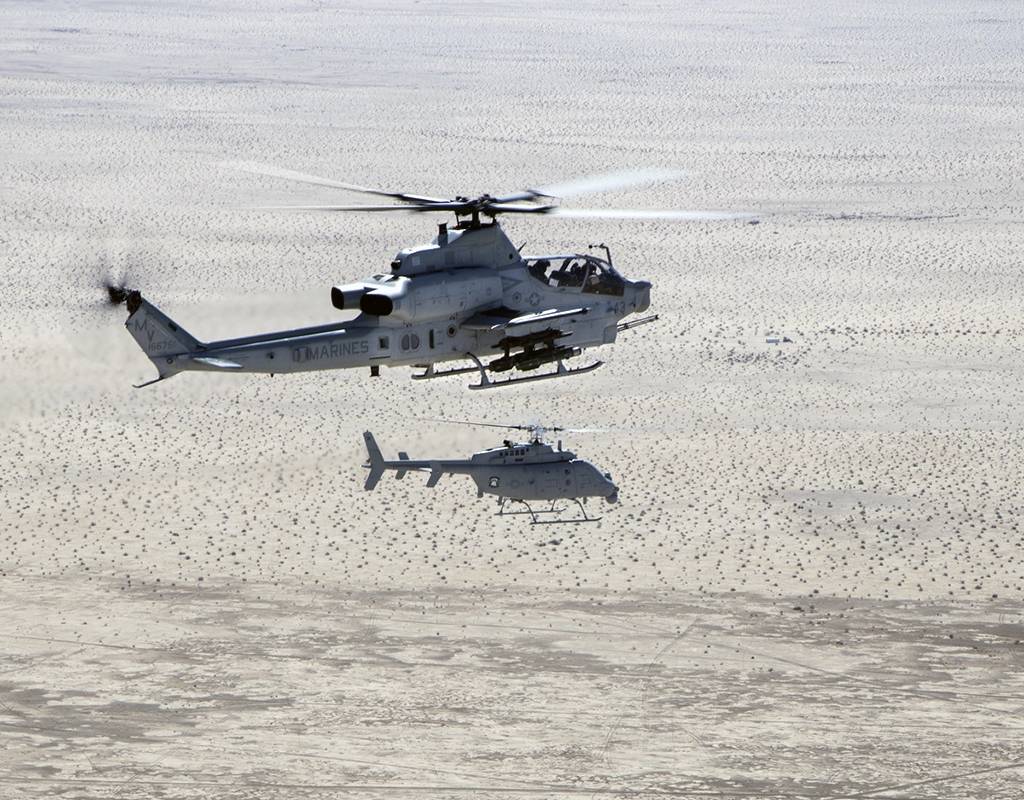
Marines from Marine Operational Test and Evaluation Squadron One (VMX-1) and sailors from Helicopter Sea Combat Squadron 23 (HSC-23) teamed up to conduct tactics development in integrating manned and unmanned rotary-wing aircraft at Naval Air Facility El Centro, California on March 10, 2022.
During the exercise, VMX-1’s UH-1Y Venom and AH-1Z Viper helicopters conducted attacks while Marines and sailors operating in the ground control station assisted with the target detection and strike coordination utilizing a MQ-8C Fire Scout.
“This opportunity promotes greater familiarization and concept development of the manned-unmanned teaming that builds confidence and efficiency throughout the Blue-Green Team,” said VMX-1 Commanding Officer Col. Byron Sullivan. “Our partnership plays an integral part of the Commandant and [Chief of Naval Operation]’s vision to embrace the future of warfare and turn it into our advantage on the battlefield.”
The services continue to develop manned-unmanned tactics to better align with the 2018 National Defense Strategy and the Commandant’s Planning Guidance. As the exercise in El Centro progressed, the Navy-Marine Corps team became more proficient in planning, communicating, and coordinating effective fires from manned and unmanned rotary-wing aircraft. The proliferation of unmanned rotary wing platforms on U.S. Navy ships makes integration with Marine rotary wing and the MH-8C a likelihood in the littoral environment.
“Adversaries are going to be placed on the horns of a dilemma as we strengthen our naval expeditionary force in leveraging unmanned systems to complement our rotary wing,” said VMX-1 Science and Technology lead Maj. Ben Henry.
The mission of VMX-1 is to conduct operational test and evaluation of Marine Corps aviation platforms and systems.
This press release was prepared and distributed by Communication Directorate, Headquarters Marine Corps.

